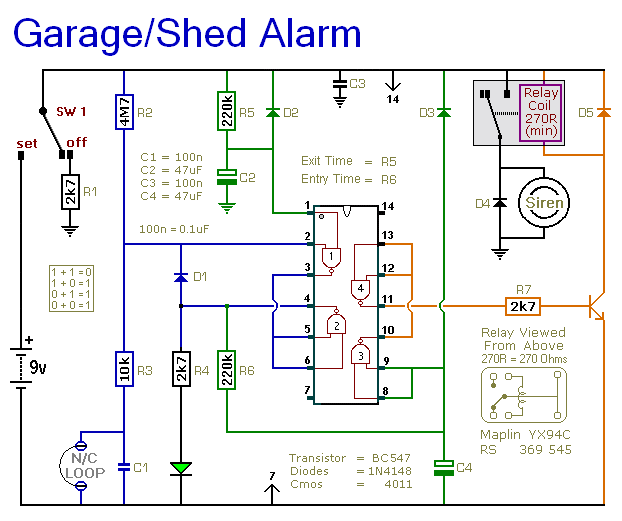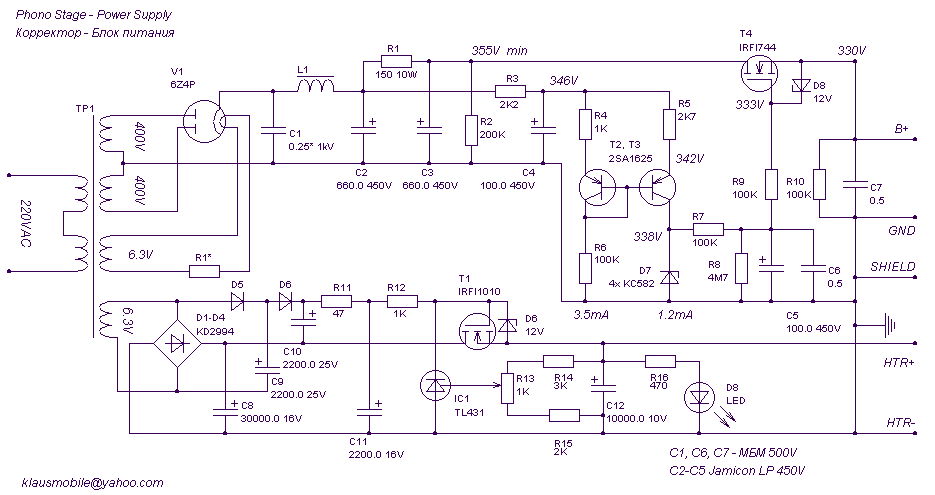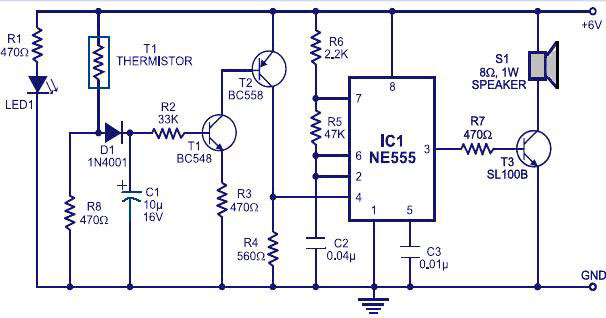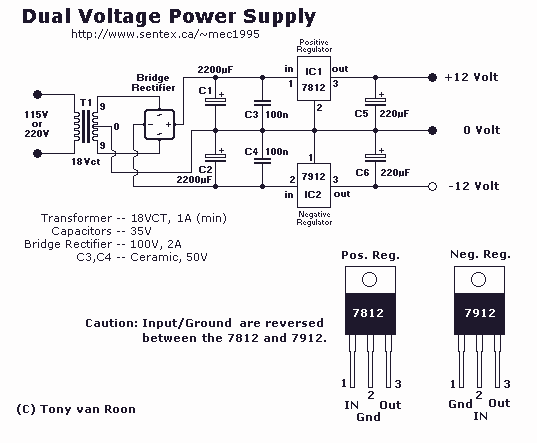
9V Power Supply For Garage Shed Alarm

The following circuit illustrates a 9V power supply for a garage shed alarm circuit diagram. Features include a single-zone burglar alarm circuit that is used with the system.
The 9V power supply circuit for the garage shed alarm is designed to provide a stable voltage source for the operation of the alarm system. This circuit typically consists of a transformer, a rectifier, and a voltage regulator to ensure that the output voltage remains constant at 9 volts, even with variations in input voltage or load conditions.
The transformer steps down the AC mains voltage to a lower AC voltage suitable for the rectification process. Following this, the rectifier converts the AC voltage to pulsating DC voltage. A smoothing capacitor is often included in the circuit to reduce the ripple in the DC output, providing a more stable voltage level.
To ensure the output voltage does not exceed 9V, a voltage regulator is integrated into the circuit. This component maintains the output voltage at a fixed level, regardless of fluctuations in input voltage or load current. The regulator may be a linear type, such as the 7809 voltage regulator, which is commonly used for such applications.
The alarm circuit itself is designed as a single-zone burglar alarm, meaning it monitors a single area for unauthorized entry. It typically includes a motion detector or door/window sensors that trigger the alarm when an intruder is detected. The alarm may be an audible siren or a visual indicator, such as flashing lights, to alert the owner of a breach.
In summary, this circuit combines a reliable 9V power supply with a single-zone burglar alarm system, making it suitable for use in a garage shed or similar environments, ensuring both security and functionality.The following circuit shows about 9V Power Supply For Garage Shed Alarm Circuit Diagram. Features:single-zone burglar alarm circuit, used with the .. 🔗 External reference
The 9V power supply circuit for the garage shed alarm is designed to provide a stable voltage source for the operation of the alarm system. This circuit typically consists of a transformer, a rectifier, and a voltage regulator to ensure that the output voltage remains constant at 9 volts, even with variations in input voltage or load conditions.
The transformer steps down the AC mains voltage to a lower AC voltage suitable for the rectification process. Following this, the rectifier converts the AC voltage to pulsating DC voltage. A smoothing capacitor is often included in the circuit to reduce the ripple in the DC output, providing a more stable voltage level.
To ensure the output voltage does not exceed 9V, a voltage regulator is integrated into the circuit. This component maintains the output voltage at a fixed level, regardless of fluctuations in input voltage or load current. The regulator may be a linear type, such as the 7809 voltage regulator, which is commonly used for such applications.
The alarm circuit itself is designed as a single-zone burglar alarm, meaning it monitors a single area for unauthorized entry. It typically includes a motion detector or door/window sensors that trigger the alarm when an intruder is detected. The alarm may be an audible siren or a visual indicator, such as flashing lights, to alert the owner of a breach.
In summary, this circuit combines a reliable 9V power supply with a single-zone burglar alarm system, making it suitable for use in a garage shed or similar environments, ensuring both security and functionality.The following circuit shows about 9V Power Supply For Garage Shed Alarm Circuit Diagram. Features:single-zone burglar alarm circuit, used with the .. 🔗 External reference





